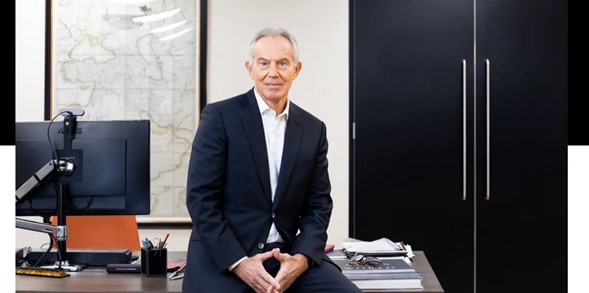COP28
COP28 considerations are important for the Lapsset Corridor


Tony Blair – I welcome the appointment of Dr Sultan Ahmed Al Jaber as the President of COP28, which will be held in the United Arab Emirates this year.
This is a pivotal year in the fight against climate change. The first global stocktake of progress towards meeting the Paris targets will conclude at COP28, and the truth is we are nowhere near where we need to be. This should spur action, and move beyond ideology and slogans to practical partnerships.
The single biggest factor in meeting the Paris targets will be the pace at which we can transition the world’s energy systems, which are responsible for 75 per cent of emissions. At the same time, we must ensure that those in developing countries who have contributed least to the crisis are equipped with the finance and technologies to adapt. Meeting this challenge will require a radical change in the way governments and public institutions engage with the private sector, and for existing partnerships to be strengthened and new partnerships forged to effectively channel finance and drive innovation.
What is the Paris Agreement?
Final Agreement has been reached at COP28. It is a legally binding treaty adopted by 196 countries at the climate change conference in Paris in 2015 (known as COP 21). The main goal of the agreement is to cut global greenhouse gases in order to limit global temperature increases as close as possible to 1.5 degrees Celsius. Of course, this is just one part of the Agreement, with other agreed measures focusing on adaptation, education, financing, technological cooperation, and recognizing the role climate action plays in reaching many other Sustainable Development Goals.
How will countries do this?
Before Paris, 186 countries submitted carbon reduction targets (known as “intended nationally determined contributions,” or INDCs), which outlined how each country would cut its carbon emissions. Once those countries joined the Paris Agreement, those INDCs became NDCs (nationally determined contributions). There is no one-size-fits-all approach for the NDCs, and different countries are taking climate action in different ways, from investing in renewable energy to introducing carbon taxes. The NDCs are to be updated every five years by Parties to the Agreement, and each new iteration is expected be more ambitious than the previous one.
The global stocktake is a critical turning point when it comes to efforts to address climate change in all Countries and Kenya – it’s a moment to take a long, hard look at the state of our planet and chart a better course for the future. Decision 19/CMA.1 notes that the global stocktake “will be a Party-driven process conducted in a transparent manner and with the participation of non-Party stakeholders” (para. 10), it enables countries and other stakeholders to see where they’re collectively making progress toward meeting the goals of the Paris Agreement – and where they’re not. It’s like taking inventory. It means looking at everything related to where the world stands on climate action and support, identifying the gaps, and working together to agree on solutions pathways (to 2030 and beyond).
Some key COP28 Agreements:

COP28 – opening statements & videos sequence start to the end – successful Agreement
US $4.48 Billion secured at COP28 by President Ruto for Green Developments in Kenya
Key Financing statements below in video
President of COP28 explained his Fossil fuel science comments
Global Cooling Pledge
How do Fossil Fuel dependent Countries transition
OPEC – Fossil Fuels should not be phased out letter
Phase down of coal
Bio-Diversity
Oil & Gas fossile fuel Day 11
Day 11 continued
Fossil Fuel – phase out or Phase down
Last day continued